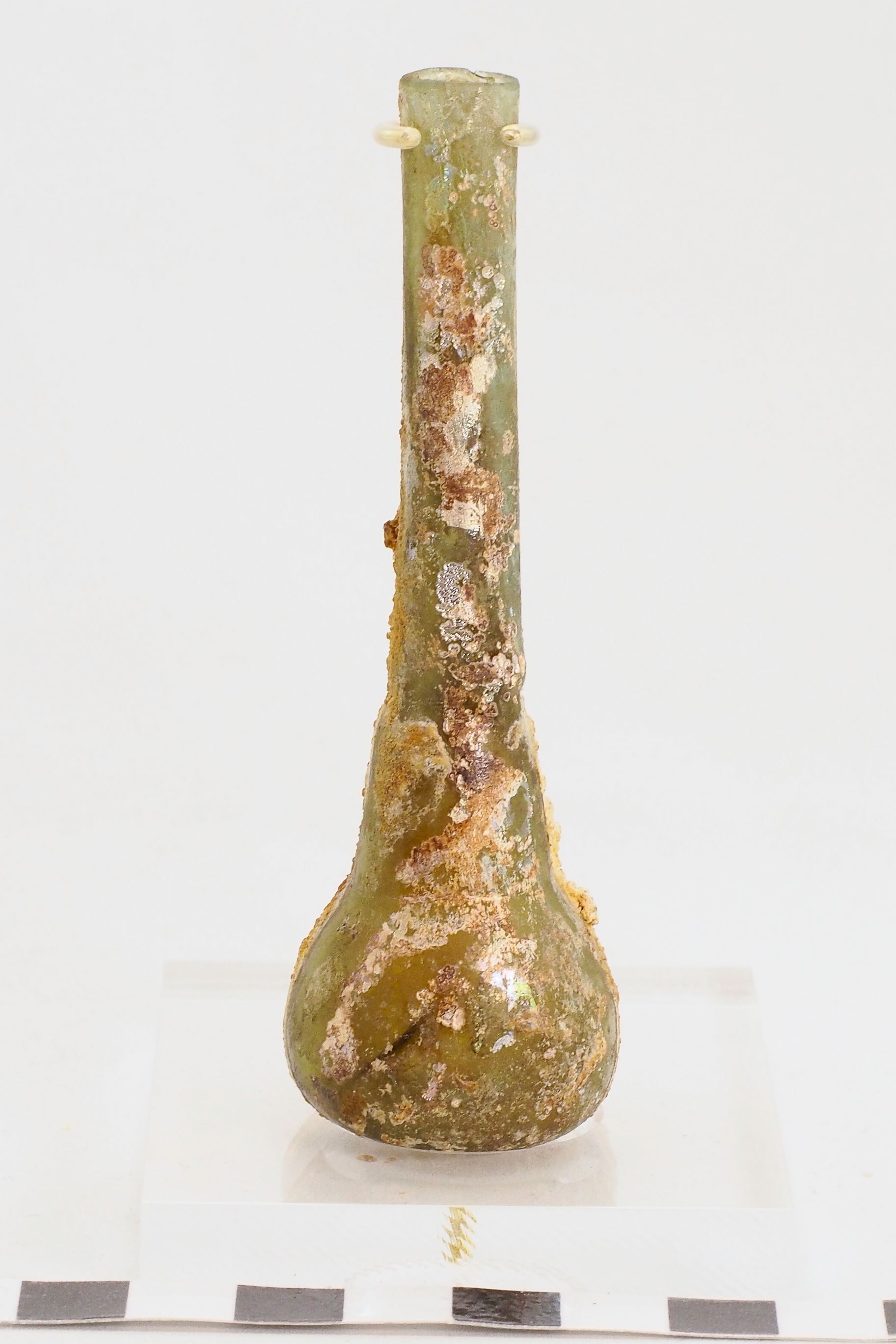Globular Unguentarium
Name/Title
Globular UnguentariumEntry/Object ID
11NE-Mi31-169Description
The rim is flat and unworked with a small crack. The long cylindrical neck widens near the bottom then slightly constricts at the junction with the body. The shoulders gently slope with a distinct ovoid bulge beneath them, giving the vessel a very faint bell-shaped body. The base is flattened. The vessel is intact with iridescence and encrustation.Use
Perfume VesselContext
The narrow mouths of unguentaria are thought to be suited to holding liquids such as water, wine, or even more viscous substances like oil or honey. However, with scientific analysis it has been found that unguentaria also stored pigments and pastes for cosmetic or medicinal purposes. They were also used to hold balms or perfumes. Ancient textual sources also indicate that unguentaria were used to hold dangerous substances (magical or toxic) for ritual purposes. However, their main purpose was to hold perfumes in everyday use or 'holy' oils for funerary rituals. This vessel follows Isings form 82 A1; Isings also suggests that this vessel type was more common in the eastern provinces of the Roman Empire.Made/Created
Date made
50 CE - 300 CETime Period
Roman ImperialEthnography
Culture/Tribe
Near Eastern - Syro-Palestine

